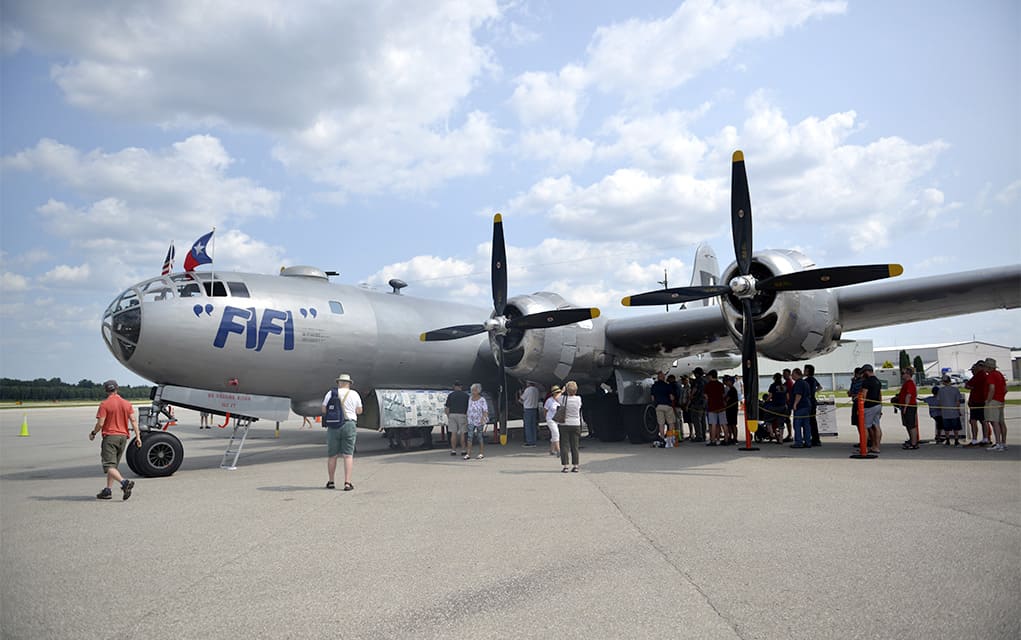A Boeing B-29 Superfortress nicknamed “Fifi,” one of only two remaining flying examples of the Second World War bomber, made a stop in Breslau this week.
The airplane was state-of-the-art for its time, expensive to develop, build and now maintain by the non-profit organization.
“This is what I call the space shuttle of 1945,” said Don Boccaccio of the Commemorative Air Force. “This was the first pressurized bomber, pressurized aircraft, period. This had auto-pilot, this had the Norden bombsight which was used to target the bombs, an onboard radar, remote control guns, an upper gun and a lower gun was depending on what they wanted, and it had 125-pound analog computers.”
Developing the bomber was estimated to cost in excess of $3 billion and was the single-most expensive weapons project undertaken by the U.S. in World War II.
“The development of this airplane cost more than the Manhattan Project, which is an atomic bomb,” said Boccaccio. “This cost more to develop than the atomic bomb did.”
It exceeded the cost of the Manhattan project by approximately $1 to $1.7 billion. As a result, the four-engine plane is costly to fly, both financially and maintenance-wise.
“This airplane uses 100 gallons of gas per hour, per engine,” said Boccaccio. “That’s 400 gallons an hour. And right now, about $3,000 in fuel alone it uses. It cost us over $10,000 an hour to run. And that’s with a complete volunteer crew. This whole crew here, and through the whole summer, has been volunteers. No one here is paid. We swapped in and out people from May to September. New interested volunteers constantly flow in and out.”
The plane never saw active duty, as it was built on July 31, 1945, one month before the war ended.
“She just had her 73rd birthday a few weeks ago,” said Rudy Vander Upwich, a B-29 volunteer. “So we celebrated with a little cake and just had a good time.”
“The wingspan is about 104 feet,” added Boccaccio. “The wingspan is longer than the Wright brothers first flight. And that was about 33 years later.”
Although it never saw active duty, it was flown for training purposes from time to time.
“Crew of 11, the typical crew was aged anywhere from 17 and 23,” said Boccaccio. “The average was 13 to 15-hour missions a day. They went from Tinian, which was one of the islands in the Marianas, to Japan and back – 13-hour round trip nonstop, every day. This never saw the European theatre at all. This was only in Japan, and the Pacific. So it never saw Germany or any of that.”
The plane has toured all over, including Nashville, Montreal, Peterborough, North Bay, before arriving here. It will continue to London today, Windsor, and then Hamilton. It will then go back to its home at the Vintage Flying Museum at the Fort Worth Meacham International Airport in Fort Worth, Texas.
The conservation group offers flights in the US$600-$700 range, but this week visitors could tour the plane on the ground for a more manageable $6-$15. After leaving Breslau Wednesday, the crew was heading to London, Ont.
“This is very popular; apparently Canadians don’t get to see a lot of this,” said Boccaccio. “This is a once-in-a-lifetime airplane to see.”









